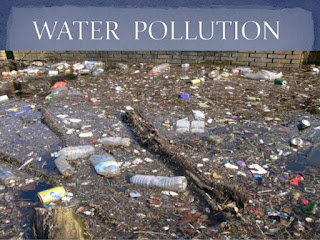Air Pollution: Environmental Pollutant Linked To Neural Tube Defects
Benzene is a colorless, flammable liquid with a sweet odor. It evaporates quickly when
exposed to air. Benzene is formed from natural processes, such as volcanoes and
forest fires, but most exposure to benzene results from human activities. The most important source of exposure to benzene is mainstream smoke from cigarettes, which accounts for about 50% of population
burden of exposure. It is also used mainly as a starting material in making other
chemicals, including plastics, lubricants, rubbers, dyes, detergents, drugs,
and pesticides. In the past it was also commonly used as an industrial solvent
(a substance that can dissolve or extract other substances) and as a gasoline
additive, but these uses have been greatly reduced in recent decades. Environmental
tobacco smoke or secondhand smoke is an important source, accounting for about
5% of total nationwide exposure.
Benzene is one
of the environmental pollutants known to cause cancer in humans. The
International Agency for Research
on Cancer has classified
benzene as a Group 1 carcinogen. This environmental pollutant is one of the few
causes acute myeloid leukemia (acute non-lymphocytic leukemia). It has also been found that Individuals
who have been treated for benzene
poisoning have an increased
risk of mortality from leukemia.
Chronic environmental exposure
to benzene has been reported
to reduce the production of both red and white blood cells from bone marrow in humans which has been linked to aplastic
anemia. Laboratory research
has documented fetal toxicity of benzene in mice and
rabbits following maternal exposure by inhalation causing a reduction in birth weight. Recent studies have tried
to link air pollution from benzene exposure in mothers to neural tube defects in fetus.
Scientists
while studying data from Texas Birth defects registry from 1999 to 2004,
measured air pollution exposures using the US Environmental Protection Agency's
model for air toxics. While estimating the annual concentration of benzene, the
calculated each participant’s level of exposure based on their environment at
the time of exposure. They identified 553 babies with neural tube defects-spina bifida and anencephaly. Although only interested in benzene, the
also investigated the effects of other environmentally common air pollutants
such as toluene and ethyl benzene.
The
results of their study showed that maternal
exposure to benzene pollution in the environment is linked to
neural tube defects in their babies. It stated that the chances of a mother
having a baby with spina bifida – one type of
neural tube defect – was twice as much in women living in environments with the highest levels of benzene pollution (approximately 3 to 7 µg/m3) when compared to women living in areas of low exposure. The study
further highlighted that the highest levels of benzene pollution was a thousand times lower than the federal workplace limits for
benzene.
Research findings revealed that the link between exposure to benzene air pollution and neural tube defects
was strongest for those in the highest exposure group, but
there were also positive associations between benzene and spina bifida risk in other lesser levels of
environmental exposure, when compared to the lowest
benzene group. It is
also important to note that their result was consistent when other important
risk factors such as year of birth, maternal race, education, poverty level or
number of children were considered. Also, they did not discover any significant
link between neural tube defects and other air pollutants.
This study is one of many which provide evidence on the association between
environmental exposure to air pollution and birth defects in babies. It is also
the first to link outdoor exposure to benzene and neural tube defects. While it is yet to be fully certain how benzene causes neural tube defects, it has been suggested that benzene's ability
to damage DNA material may play a critical role especially if exposures occur
during a sensitive time of fetal development.
Although the population examined in this study was Texas,
an area with high benzene emissions, it still limits this study as it is not
known if results can be applied to other regions around the world. It is
suggested that future studies should use air pollution data from multiple years
and sources. Nevertheless, the findings may have a direct impact on regulation
of benzene emissions particularly those from petrochemical industries, which
emit high levels of benzene.





Comments
Post a Comment